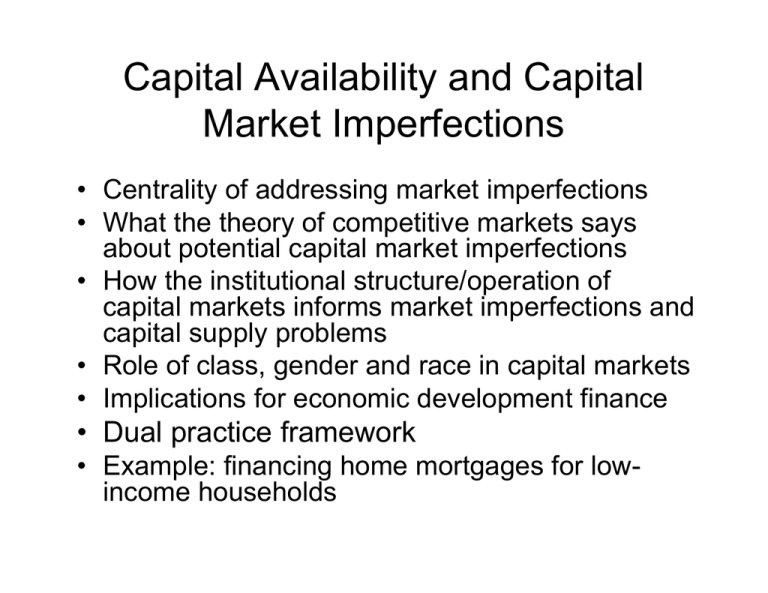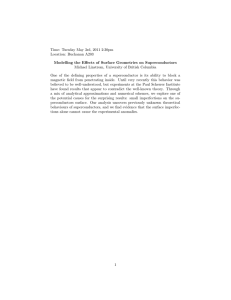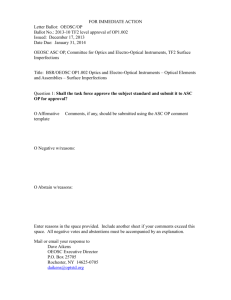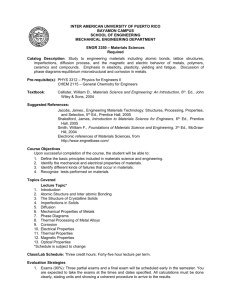Capital Availability and Capital Market Imperfections
advertisement

Capital Availability and Capital Market Imperfections • Centrality of addressing market imperfections • What the theory of competitive markets says about potential capital market imperfections • How the institutional structure/operation of capital markets informs market imperfections and capital supply problems • Role of class, gender and race in capital markets • Implications for economic development finance • Dual practice framework • Example: financing home mortgages for lowincome households Market Imperfections in Theory • Theory: “perfect” competitive markets allocate capital to the most productive users • Perfect markets require: – – – – Many suppliers and users of capital Perfect information/insignificant information costs Insignificant transaction costs Costs and benefits are reflected in prices (no externalities) – Participants seek to maximize economic returns • Imperfections and capital supply gaps occur when these conditions do hot hold • Political and policy case for development finance – Better productivity and economic growth – Social benefits Capital Markets in Practice • Capital markets: set of institutions that accumulate and channel savings to households, businesses and governments and provide a return to suppliers of capital • Institutional structure and operation of capital markets shapes supply gaps • “Public” vs. “Private” capital markets Public Capital Markets • • • • • • • Standard investment instruments Extensive public information Liquid investments Direct investor purchase of securities Regulated by states & federal government (SEC) Stock market supplies business equity Bond markets supplies debt to governments, firms and households • Money markets supplies short-term debt • High transaction costs to access public markets – Several $ hundred thousand, >10% of small issues – Gatekeepers’ interests and biases limit access Private Capital Markets • Intermediary institution between capital users and suppliers • Direct placement and negotiation of financing between capital user and intermediary • Depository intermediaries: commercial banks, savings banks, credit unions • Non-depository: commercial finance companies, life insurance companies, venture capital funds • Geography affects supply • High fixed information costs & opacity • Regulatory influences on supply • Non-rational behavior and investment bias Capital Markets: Recent Trends • Increasing role of public markets and decreasing assets held/originated by depositories – Mortgage banks & brokers, pension funds, mutual funds • Bank consolidation and growth in in venture investment has created larger intermediaries and minimum transactions • Automation of business lending (credit scoring) • Growth of “fringe” & predatory financial services in low-income and minority neighborhoods – Sub-prime mortgages grew tenfold in 1990s Race/class/gender and Capital Availability • Long history of disparity in access to capital and exclusionary policies – FHA mortgage policies – Red-lining of low-income neighborhoods – Segregated financial institutions and networks • Inequality in income, wealth, & education limits access to informal and formal capital • Institutionalized discrimination in financial institutions & products serving communities – Nexus of residential & financial segregation – Sub-prime loans are 3X more likely in low-income area; 5X more likely in black neighborhoods, independent of income • Large racial disparities in lending decisions and pricing remain Economic Development Implications • Several common capital supply gaps result from capital markets imperfections: – – – – Lack of institutional equity for most small businesses Limited availability of small commercial loans Limited availability of long term debt Disparities in access to capital exist based on geography, personal wealth, race and gender • Private capital markets and intermediaries are most critical sources for community economic development • Need to understand how market, regulatory and internal factors shape regional capital supply by private financial institutions for community economic development Dual Approach to Development Finance • Perfect operations/practices in private sector capital markets – Risk sharing tools and policies – Bank and financial institution regulation – Addressing information and transaction costs • Create alternative financial institutions – – – – Revolving loan funds Venture capital funds CDFIs Micro-enterprise Funds





